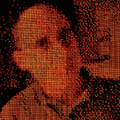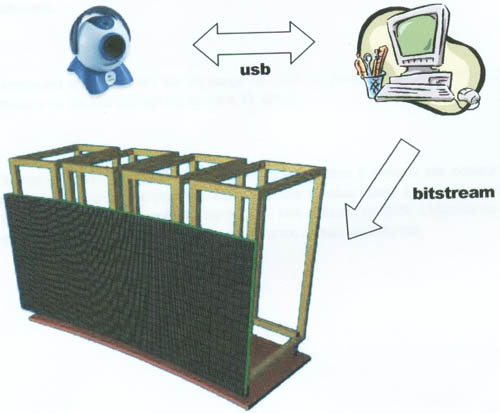 |
 |
||
|
|
|
||
|
|
The BioWall's cellular tissue has not been designed specifically to be used as a video display. It is however possible to display digital images and even video streams in low resolution and at low frame rates by means a rather sophisticated design. The camera experiment allows to display a video stream coming from a standard web-cam on the BioWall. We use a Logitech camera with an image resolution of 160x120 pixels and 32 bits of color information. The captured video-stream is pre-processed on a PC before a special bit-stream is sent to the BioWall.
To display the video bit-stream, the BioWall's molecules are configured to form a large shift-register. The bit-stream is decoded within each molecule and the information received is displayed. The actual frame-rate is about one image per second. In addition, a three-image animation with a much higher frame-rate can be generated on the BioWall itself: by touching one of the touch-sensitive membranes, the current image is memorized in a special memory located within each molecule. When all available memories are full, the three images are displayed in an infinite loop (at about 8 frames per second).
For further information
Resources
|





